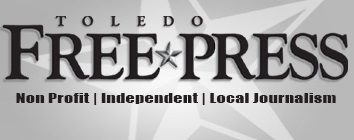This is the second in a series about the Toledo Public Schools levy. The first was “Tough Choices,” published July 26.
On the November ballot is Issue 1, a 5.8-mill levy for the Toledo Public Schools (TPS) that will increase local taxes by $13.3 million annually ($66.5 million over the five-year levy term). TPS officials have suggested numerous uses for the new funds, including $5.5 million ($27.5 million over five years) to create competitive salaries for retention and recruitment of employees.
From analysis of TPS data acquired through an open records request and numerous questions posed to TPS personnel, it appears the competitive salaries claim is not based on a thorough review and analysis, nor is there any basis to believe competitive issues exist except with principals, new hires and teacher specialists.
Only one documented analysis has been completed and it was done during contract negotiations in 2013 with the findings contained in the Sept. 18, 2013, fact finder report by Nels Nelson.
The 2013 report shows Nelson obtained all the information from the Toledo Federation of Teachers (TFT) and his analysis included only two of 182 salary grades on the salary ladder schedule. Further, there was no review of any other form of compensation, including health insurance, sick time, paid holidays, time in each district school day, sick time bonuses, personal days and severance payments. Cost of living differences among Ohio cities were also not considered.
In establishing an effective compensation package that meets the goals of the organization many factors have to be considered, yet TPS has decided to discuss just the salary portion and claim a competitive disadvantage with other local and large urban school districts.
From an employee’s perspective, salary is only one part of the equation. Benefits and working conditions also factor in heavily. In looking at TPS, they have excellent health benefits with deductibles and premiums lower than most in the private and public sector. They have 15 sick days, which can be accumulated, and seven holidays included in a 190-day work year. Severance pay upon retirement can be significant and in the past five years has averaged over $6.7 million per year, or an average of $4,000 for every teacher employed. Depending on accumulated sick time, employees can get as many as three additional personal days and a bonus payment of up to three days of pay. And those long summer vacations are attractive to many versus a 260-day work year in the private sector.
Finally, in looking at working conditions, how do you put a price on the challenges confronting teachers in an urban versus suburban school? It would seem that additional compensation would be needed to attract teachers to TPS’ underperforming central city schools. This is an issue that is constantly ignored or glossed over because it requires contractual changes and no one wants to tackle that political football.
TPS uses a single salary ladder for all teachers, which provides no incentives internally for staffing underperforming schools nor externally for hard-to-fill teacher specialist positions, such as science, math and special education.
TPS officials claim that operations have been adversely impacted by administrative employees — specifically principals — leaving for higher paying positions. It’s claimed that principals are being trained by TPS only for the best to be recruited away with salary increases of $20,000 or more above TPS’ maximum salary.
The claim leaves out an important fact: TPS is the only school district in Ohio where principals are unionized. Therefore, they have established a salary range for principals and by union contract cannot pay more than the contract maximum. Increasing the salary of all 49 TPS principals by $20,000 would cost taxpayers nearly $1 million annually to retain a small number of principals who would otherwise leave.
The competitive issue here is not salary and benefits but contractual language that prohibits TPS from offering competitive salaries to retain highly qualified principals.
Currently TPS pays out $93.2 million for the salaries of teachers and principals. If the entire $5.5 million earmarked for salary increases were paid just to these two groups — forgetting other administrative and non-teaching employees — it would amount to a 5.4 percent salary increase, which may or may not bring about parity with other districts.
TPS officials may have their reasons for this levy but they seem mostly political with trumped-up claims. It also seems they have spent little time understanding and designing an effective compensation system to recruit and retain employees, can’t justify with research or documentation that they have a competitive disadvantage in the compensation area and can’t really tell us how much is needed to overcome the perceived disadvantage. If they were in the classroom, they would likely get an “F” for not doing their homework and their inability to support the claims made.
This levy is like a pig in a poke. You don’t know what you’re getting and you don’t know if the taxes collected will result in higher student achievement. TPS officials cannot provide you with the research, analysis and documentation of the claims they have made nor can they promise the levy is sufficient to resolve the perceived issues.
Steven Flagg is a community activist with more than 20 years of experience in education advocacy including monitoring Toledo Public Schools’ policies, practices and operations. For more of his writings about TPS, visit tpsinfo.com.




